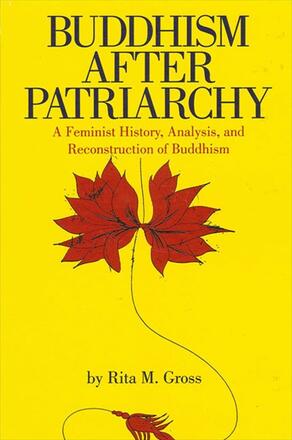
Buddhism After Patriarchy
A Feminist History, Analysis, and Reconstruction of Buddhism
Alternative formats available from:
Description
This book surveys both the part women have played in Buddhism historically and what Buddhism might become in its post-patriarchal future. The author completes the Buddhist historical record by discussing women, usually absent from histories of Buddhism, and she provides the first feminist analysis of the major concepts found in Buddhist religion. Gross demonstrates that the core teachings of Buddhism promote gender equity rather than male dominance, despite the often sexist practices found in Buddhist institutions throughout history.
Rita M. Gross is Professor of Comparative Studies in Religion at the University of Wisconsin - Eau Claire. A former president of the Society for Buddhist-Christian Studies, she is the editor of Beyond Androcentrism: New Essays on Women and Religion, and with Nancy Falk, of Unspoken Worlds: Women's Religious Lives. She is also the author of numerous articles and essays on women and religion.
Reviews
"I cannot say enough in praise of this book. It is well balanced, balancing creative insightful thinking with solid scholarship, and it is fascinating—a real page-turner. (I'm not kidding!)" — Grace G. Burford
"The power of this book comes from the combination of the passion and analytic skill that Gross brings to this feminist reconstruction of the Buddhist tradition. It is a book that should inform all introductory classes on Buddhism. Through a reexamination of basic texts, Gross describes women's experiences in different cultures and epochs, and shows their relevance for the Buddha's Path to Enlightenment as well as for the social roles and images of women in different times and places. " — Frederick J. Streng, Southern Methodist University
"Gross has written the magnum opus of feminist critique and revisioning of Buddhism. This has great theoretical and practical significance for feminist theology in its global inter-faith dialogue. The particular merit of this book is its bridging of high quality scholarship and accessibility to the non-expert. " — Rosemary Radford Ruether, Garrett Theological Seminary and Northwestern University
"The book will fill a real, indeed urgent, need and be of great service to many Buddhists and students, scholars and friends of Buddhism. Here are some of its many strengths: It clearly harvests years of impassioned study and experience, offers refreshingly bold, original and well-reasoned arguments, and deals with important questions that only a woman who is both a scholar and practitioner would adequately recognize. It appropriately combines both textual work and historical/anthropological perspectives, along with a clearly delineated feminist theoretical stance. It offers a valuable overview of the roles of women and discerning comparisons between them. The feminist analysis of key Buddhist concepts is excellent, especially issues of gender in relation to selflessness, emotions, nonduality. These burning issues for many Western women meeting Buddhism receive here very thoughtful, thorough, original treatment. The 'prophetic voice' that Gross openly brings to the Buddhist tradition is welcome, moving and appropriate. " — Joanna R. Macy